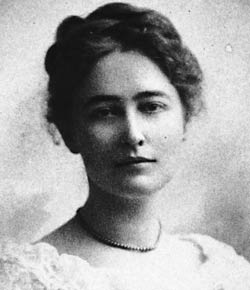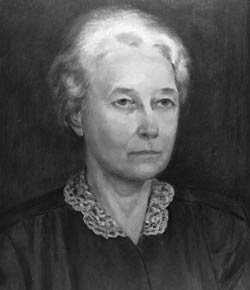<Back to Index>
- Biochemist Maud Leonora Menten, 1879
- Painter Illarion Mikhailovich Pryanishnikov, 1840
- King of Siam Rama I (Buddha Yodfa Chulaloke), 1736
PAGE SPONSOR


Maud Leonora Menten (March 20, 1879 – July 26, 1960) was a Canadian medical scientist who made significant contributions to enzyme kinetics and histochemistry. Her name is associated with the famous Michaelis - Menten equation in biochemistry.
Maud Menten was born in Port Lambton, Ontario, and studied medicine at the University of Toronto (B.A. 1904, M.B. 1907, M.D. 1911). She was among the first women in Canada to earn a medical doctorate. She completed her thesis work at University of Chicago. At that time women were not allowed to do research in Canada, so she decided to do research in other countries such as the United States and Germany.
In 1912 she moved to Berlin where she worked with Leonor Michaelis, obtaining a Ph.D. in 1916. Menten worked as a pathologist at the University of Pittsburgh (1923 – 1950) and as a research fellow at the British Columbia Medical Research Institute (1951 – 1953).
Her
most famous work was on enzyme kinetics together with Michaelis, based
on earlier findings of Victor Henri. This resulted in the Michaelis - Menten equations. Menten also invented the azo-dye coupling reaction for alkaline phosphatase, which is still used in histochemistry. She characterised bacterial toxins from B. paratyphosus, Streptococcus scarlatina and Salmonella ssp.) and conducted the first electrophoretic separation of proteins in 1944. She worked on the properties of hemoglobin, regulation of blood sugar level, and kidney function. Despite suffering from arthritis she was also an accomplished musician and painter; there were several exhibitions of her paintings.
